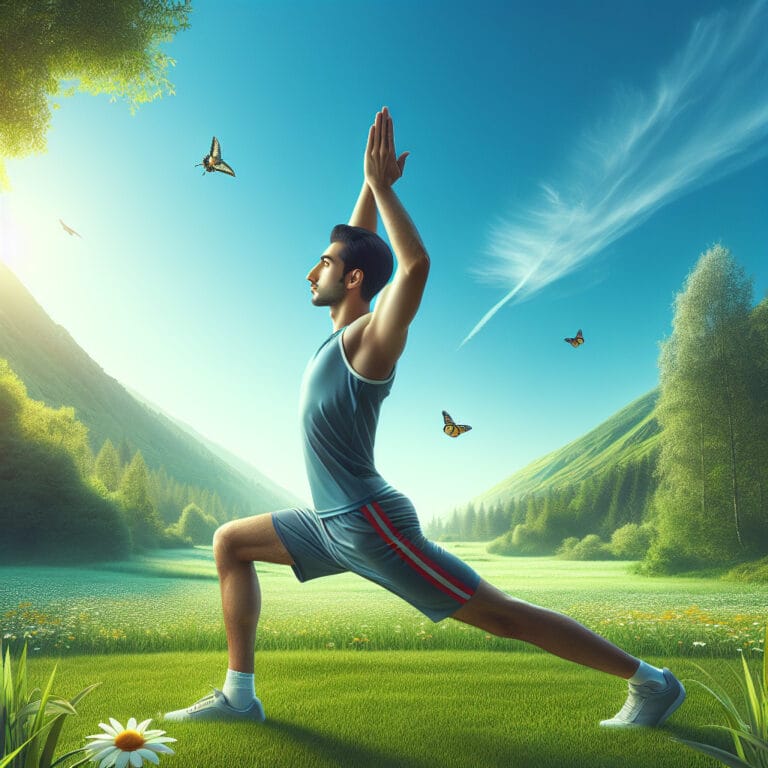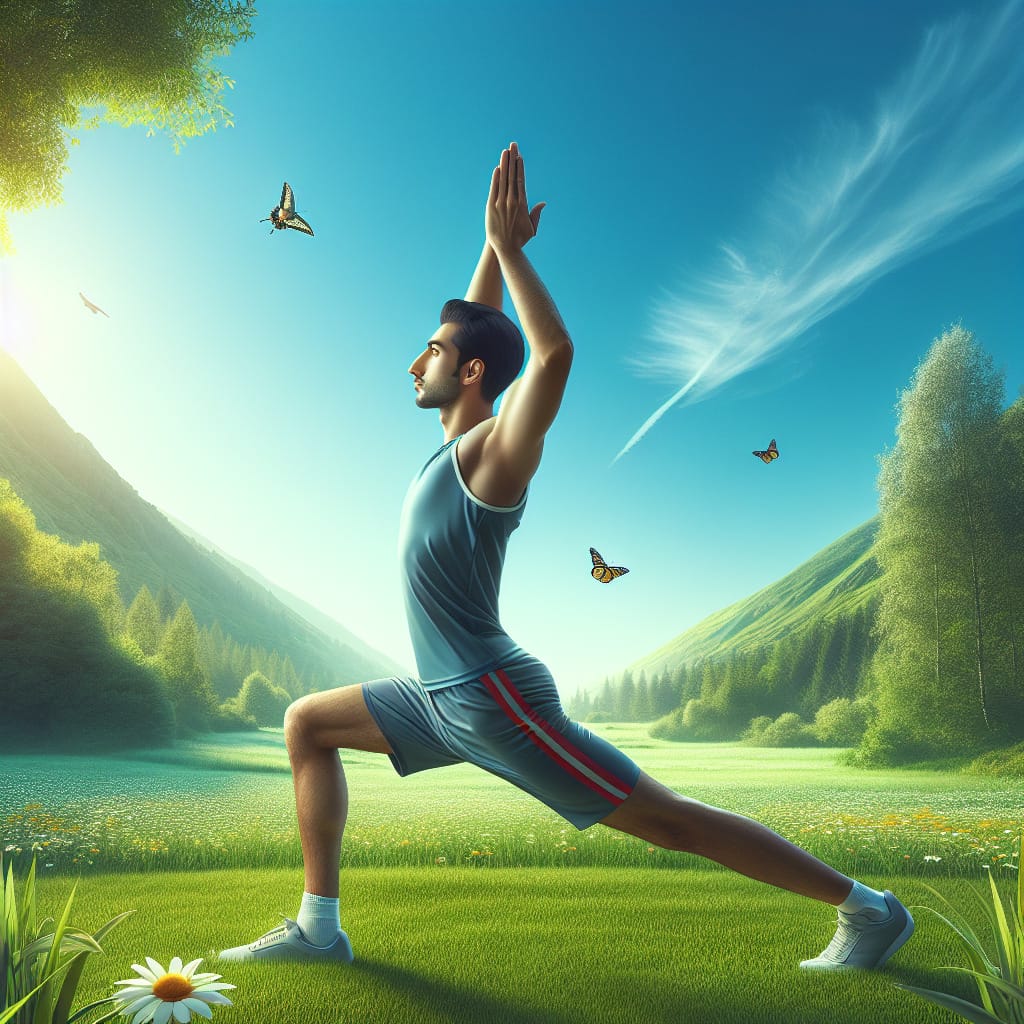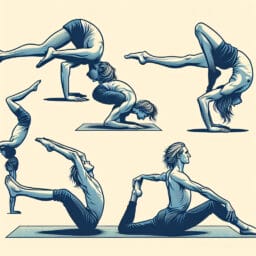
Master the Extended Triangle Pose in Yoga for Enhanced Flexibility
Table of Contents
Master the Extended Triangle Pose in Yoga for Enhanced Flexibility
The world of yoga offers an array of poses, each with their unique benefits and levels of challenge. However, the Extended Triangle Pose, or Utthita Trikonasana in Sanskrit, has etched its niche as a fundamental pose in many yoga sequences that can significantly enhance flexibility. This standing pose is known not only for its elegance but also for the myriad of health benefits it offers – from strengthening your legs to stretching your hip joint, abdominal muscles, and side body.
The fascinating history of this pose lies within its name Utthita Trikonasana – ‘Utthita’ meaning extended, ‘Trikona’ translating to triangle and ‘Asana’ signifying posture. It’s believed to be inspired by the stability and balance offered by the three sides of a triangle – echoing similar stability in our body when we execute this pose correctly.
Performing the Extended Triangle Pose begins with entering into Utthita Tadasana or Mountain Pose as a base pose. Your feet should be firmly grounded at shoulder level while reaching out your arms parallel to the floor. Carefully turn your left foot slightly inward and right foot outward at about 90 degrees angle before extending them apart around four feet away from each other. You must then reach out towards your right side with your right hand directly above your big toe on the floor or ankle if you feel unsteady; ensure you keep both legs straight without locking knees.
This balancing Asana leverages almost every muscle group in our body – from back muscles providing support to abdominal muscles being activated through torsion forces developed during rotation. It doesn’t end there – athletes engaging consistently with this yogic practice have reported improvements in their lower back pain issues due to enhanced flexibility achieved through regular practice.
For beginners who find it difficult maintaining balance initially or those experiencing neck issues can use props like blocks under their lower hand for added support until they build strength and flexibility over time. Always remind yourself that Yoga is a deep dive into self-discovery and not a competition – the key lies in persistent practice.
While mastering this pose, you can also explore variations like the Revolved Triangle Pose or Bound Triangle Pose to challenge your flexibility further. These advanced versions involve deeper twists and binds, leading to increased spinal mobility and abdominal muscle strength.
Yoga teachers often emphasize focusing on breath work during this Asana. As you draw your arms towards the sky in Extended Triangle Pose as if drawing energy from it – feel the connection between your body and mind while meditating through guided meditation sequences.
In conclusion, whether you are a registered yoga instructor teaching creative yoga classes or an enthusiast seeking to reap benefits from different type yoga poses – remember that style and benefit of each Asana varies depending on individual capabilities. The Extended Triangle Pose stands tall as a powerhouse for enhancing flexibility in many areas of our bodies when performed correctly with consistent practice. Therefore, keep practicing until it becomes your second nature.

Frequently Asked Questions
Q: What is the Extended Triangle Pose in yoga?
A: The Extended Triangle Pose is a yoga posture that enhances flexibility. It involves spreading your legs wide, turning one foot outwards, and stretching your body to touch your toe, while extending your other arm upwards.
Q: Why is the Extended Triangle Pose important in yoga?
A: The Extended Triangle pose is a vital part of many yoga sequences due to its various benefits including enhancing flexibility, improving digestion, relieving stress, and strengthening muscles.
Q: What is the origin and philosophy behind the Extended Triangle Pose?
A: The Extended Triangle Pose, also known as Utthita Trikonasana in Sanskrit, is a part of ancient yoga philosophy. It exemplifies the concept of balance and stability – crucial aspects of the yoga philosophy.
Q: How does the Extended Triangle Pose enhance flexibility?
A: This pose stretches and strengthens various parts of the body, including the legs, hips, and spine, thereby enhancing overall flexibility. It also opens up the chest and shoulders, promoting better posture and flexibility in these areas.
Q: Are there common mistakes in doing the Extended Triangle Pose?
A: Yes, common mistakes include misalignment of the body, not keeping the back straight, and straining the neck by looking upwards. It’s important to ensure proper alignment and smooth, relaxed movements.
Q: What are some tips for executing the Extended Triangle Pose correctly?
A: Ensure your legs are spread wide enough for balance, turn one foot outward with the other foot slightly inwards, reach out for the ankle or the toe without straining, and maintain a straight back while extending the other arm upwards.
Q: What are some advanced variations of the Extended Triangle Pose?
A: Advanced variations include the Revolved Triangle Pose and the Bound Triangle Pose. These poses involve deeper twists and bends, providing a more challenging flexibility and balance practice.
Q: Does continuous practice of the Extended Triangle Pose have any benefits?
A: Yes, regular practice of the Extended Triangle Pose can significantly improve flexibility and balance, strengthen muscles, enhance digestion, and help relieve stress.



